Past Newsletters
Past Presentations from North Texas Chapter Monthly Meetings
2024
Chapter Meeting Dec 2024
PRESENTER: Christian “CJ” Utara
TITLE: Johns Hopkins University: Balancing the Instruction of Core Systems Engineering Principles with Model-Based Systems Engineering
Location: Virtual
ABSTRACT: The Master of Science degree in Systems Engineering at Johns Hopkins University has grown to be one of the largest SE Masters Programs, founded on the practical knowledge of Dr. Alexander Kossiakoff, the founder of the program. It is ABET accredited, and is focused on developing strong systems engineers with a solid foundation in systems thinking and the application of the SE viewpoint. As MBSE has grown in the past years, JHU has carefully incorporated MBSE into elements of the program, to include two dedicated electives on the subject. As MBSE has expanded across industry and DOD, JHU decided to fully incorporate MBSE throughout the core curriculum. This discussion will focus on balancing the instruction of core SE fundamentals and the use of MBSE to accomplish the functions of SE.
BIO: In 1985, CJ Utara began his journey in the field of engineering by entering the Navy's Cooperative Education Program while attending school as a student in the Electrical Engineering Department of the University of Maryland, College Park. He graduated in 1990 with a BSEE degree.
In 2012, CJ accepted the position of MSSE Quality and Assessment Coordinator for JHU and is now a member of the program’s Systems Engineering Leadership Team. In this role, CJ is responsible to oversee the development and update of all courses within the systems engineering program. He also evaluates instructor and course performance every semester to continually optimize the program.
Chapter Meeting Nov 2024
Presenter: Roman Eble
Title: Human Systems Integration, Education, and Talent
Location: Virtual
ABSTRACT: This presentation provides an overview of Human Systems Integration (HSI) within the Systems Engineering process and program management efforts. It highlights the integrated and comprehensive analysis, design, and assessment of requirements, concepts, and resources for various HSI domains including human factors engineering, manpower, personnel, training, safety and occupational health, force protection and survivability, and habitability.
Chapter Meeting Oct 2024
Presenter: Ryan Noguchi
Title: Key Modeling Principles to Moderate the Growth of Model Technical Debt in MBSE
Location: Virtual
ABSTRACT: MBSE is the emerging practice of systems engineering (SE) in which descriptive models replace documents as the embodiment of SE knowledge. Consciously applying appropriate model architecting principles and practices is essential to make well-informed architectural decisions about the models to prevent the accumulation of excessive model technical debt. This presentation explains the nature of technical debt in descriptive models and describes 24 foundational principles that model architects should consider when making these architectural decisions and the technical debt tradeoffs that result when those principles are not followed. Applying disciplined model architecting practices to conscientiously manage the accrual and payoff of technical debt can make the difference between an enduring model that provides substantial value throughout the life cycle of the modeled entity and a model whose value collapses under the weight of uncontrolled technical debt.
Chapter Meeting Sept 2024
"The Future of INCOSE" presented by Steve Records, Executive Director of INCOSE
Location: Virtual (Teams)
ABSTRACT:
Join us for this exclusive opportunity to hear from one of the leaders shaping the future of systems engineering. Steve will be sharing his insights on where INCOSE is headed and the strategic initiatives that will impact our profession in the
years to come.
Whether you're a seasoned professional or just beginning your systems engineering journey, this is a must-attend event. Don't miss out on the chance to engage with Steve and fellow members of our community.
Chapter Meeting Aug 2024
"A Celebrating Digital Engineering Wins", by Daniel Hettema, Director of Digital Engineering, Modeling and Simulation
Location: Virtual (Teams)
ABSTRACT:
In a presentation titled, “A Celebrating Digital Engineering Wins,” Mr. Daniel Hettema, Director of Digital Engineering, Modeling & Simulation (DEM&S), will describe how DEM&S and the Department is moving the Digital Engineering (DE) needle forward. This includes addressing challenges in transitioning to full digital implementation with the Defense Industrial Base. By recognizing and celebrating small wins, DEM&S aims to foster organizational change that will accelerate DE acquisition, delivering more effective solutions to the warfighter. In his presentation, Mr. Hettema will challenge attendees to take on the role of change managers to meet key initiatives in progress. The session will pinpoint critical transition points for analysis and operational efficiency, as well as identify potential gaps for future needs. To leverage the benefits of DE processes and tools for optimizing designs in the virtual world, each Service has developed implementation plans to realize the focus areas outlined in the National Defense Science and Technology Strategy (NDS).
Daniel Hettema serves as the Director of Digital Engineering, Modeling & Simulation (DEM&S) within the Office of the Under Secretary of Defense for Research and Engineering (OUSD(R&E)). In this role, he offers expertise to senior leaders and oversees policy, guidance, and foundational research throughout the Department of Defense (DoD) that will advance the workforce and accelerate the adoption of digital engineering (DE). Under Mr. Hettema's leadership, participation in the Community of Practice (CoP) and interactions within the Digital Engineering Body of Knowledge (DEBoK) have experienced significant growth, as evidenced by more than a thousand percent increase. Additionally, he established an annual federal government-wide knowledge exchange event, Federal Digital Engineering Forum (FED DEF), dedicated to DE and drove the development of the DoDI 5000.97 Digital Engineering. Mr. Hettema focuses on equipping practitioners across the DoD with the tools, techniques, and training to empower the workforce and facilitate the successful implementation of DE. With a wealth of experience in both industry and government, he has supported the Department of Energy (DOE) and Intelligence Community (IC) in addition to his work within the DoD. Mr. Hettema holds a B.S. in Systems Engineering from George Mason University, a M.S. in Space Systems Engineering from John Hopkins University, and is a certified Systems Engineering Professional by INCOSE and a level four System Modeling Language (SysML) modeler. His enthusiasm for digital engineering, modeling and simulation within the DoD is evident through his commitment to fostering ongoing collaboration and knowledge exchange.
Chapter Meeting July 2024
"Darth Vader's Secret Weapon: Implementing Mission Engineering with UAF", by Matthew Hause
Location: Virtual (Teams)
ABSTRACT: Mission Engineering (ME) is often misunderstood. This paper will explore modeling features and constructs that will enable ME. The proposed extensions for UAF include Missions, Mission Phases, Mission Thread, ME Thread, measures, additional attributes/stereotypes to differentiate between enemy/friendly/neutral forces, provenance/confidence of enemy resources, etc. We will also cover compatibility with the Model-Based Acquisition (MBAcq) approach, recent initiatives from the Office of the Assistant Secretary of Defense for Mission Capabilities, Enterprise Systems Engineering (ESE) process and methods, detailed resource engagement, use of SysML, etc. We created a prototype model using the Battle of Hoth from Star Wars as a proof of concept for these modeling extensions and used the process and mission engineering concepts defined in the Mission Engineering Guide (MEG). This presentation will cut through the confusion like a light saber to help attendees become Jedi Masters in ME.
BIO: Matthew Hause is an SSI Principal and MBSE Technical Specialist, a former PTC Fellow, a co-chair of the UAF group and a member of the OMG SysML specification team. He has been developing multi-national complex systems for over 45 years in the USA, Europe (25 years), Australia, and throughout the world. as a systems and software engineer. He started out working in the power systems industry and has been involved in military command and control systems, process control, manufacturing, factory automation, communications, SCADA, distributed control, office automation and many other areas of technical and real-time systems. His roles have varied from project manager to developer. His role at SSI includes mentoring, sales presentations, standards development, presentations at conferences, specification of the UAF profile and developing and presenting training courses. He has authored over 100 technical papers, articles, and conference presentations on architectural modeling, project management, systems engineering, model-based engineering, human factors, safety critical systems development, mission engineering, virtual team management, product line engineering, systems of systems, systems and software development with UML, SysML and Architectural Frameworks such as UAF, DoDAF and MODAF. He has been a regular presenter at INCOSE, NDIA, the IEEE, BCS, the IET, the OMG, AIAA, DoD Enterprise Architecture, Embedded Systems Conference, and many other conferences. He is also a proud recipient of the INCOSE MBSE Propeller Hat Award.
Chapter Meeting June 2024
"An Introduction to Architectures", by Rolf Sieger
Location: Virtual (Teams)
ABSTRACT: This overview will provide attendees with insights on key elements of the architecture discipline. Topics covered include:
- Terminology/definitions
- Synergies across software, systems, and enterprise architecture
- Developing, documenting, assessing, and governing architectures
- Architecture standards and frameworks
- Role and skills of the architect
- Architecture professional organizations
- Architecture credentials (certifications and certificates)
- Learning more about architecture
Bio: Rolf is a co-Chair of INCOSE’s Architecture Working Group. He is a Technical Fellow and Certified Architect at RTX. Rolf leads the companywide Mission Architecture Program (MAP), a group of initiatives established to evolve architecture practices across the company. The MAP encompasses architecture process, training and certification, governance, assessment, reference architectures, tools, and collaborations with government, industry, academia, and standards organizations. The program’s scope spans software, systems, and enterprise architecture. Rolf resides in Dallas, Texas and is also involved with The Open Group Architecture Forum, System Architecture Forum, and NDIA Architecture Committee
Chapter Meeting May 2024
"INCOSE SEP Certification Program", by Kayla Mohammad
Location: Virtual (Teams)
Abstract: The INCOSE SEP Program helps establish an international formally recognized body of knowledge for the systems engineering community, provide professional development through certification requirements, and offers industry approved measures of professional knowledge. This presentation will go over how to obtain and maintain a SEP Certification. INCOSE offers 3 levels of SEP Certification for practicing Systems Engineers, ranging from recent graduates to Systems Engineering Leadership. INCOSE SEP Certification to become an Associate Systems Engineering Professional (ASEP) can be obtain through the SEP Certification Exam administered through an INCOSE Chapter, or through Academic Equivalency at select universities. Certified Systems Engineering Professionals (CSEP) and Expert Systems Engineering Professionals (ESEP) are able to become certified through systems engineering discipline experience documentation over a 1 to 2 year time frame. All SEPs who maintain an INCOSE individual membership are able to renew their certifications with Professional Development Units, consisting of Technical Society participation, Systems Engineering coursework and publications, and Systems Engineering job functions beyond daily task.
Bio: Kaylah Mohammed is an Early Career Systems Engineer at Lockheed Martin. During her 10 months at the company, Kaylah continues to work under the MBSE Competency Team as part of the Aeronautics Technical Assessment Review (ATAR) Team. Additionally, Kaylah is also a part of the VS Requirements Team for a classified program and has recently taken over Lockheed Martin Aeronautics Engineering Excellence. Kaylah was born and raised in Queens, New York and attended the State University of New York at Buffalo to receive her bachelors in Aerospace Engineering. In her free time, Kaylah enjoys traveling, trying new restaurants, watching crime movies, cooking, and teaching her dog Milo new tricks.
Chapter Meeting April 2024
"Risk Management and Systems Engineering: The Shaping of New and Future Activities of the INCOSE Risk Management WG", by Jack Stein and Bob Parro
Location: Virtual (Teams)
Abstract: Systems engineers as individuals, and the field of systems engineering as a whole, are faced with an enormous challenge. Increasing system complexity, and ever more rapid and unpredictable developments and changes in technology, and in the socio-technical environments in which we will engineer and use the systems of the future, are creating levels of uncertainty, risk, and opportunity never before encountered.
In response, the practice of risk (and opportunity) management, in general and specifically as related to systems engineering, are undergoing significant change.
This presentation will inform attendees of recent changes in the practice of risk (and opportunity) management, and will provide an overview of INCOSE Risk Management Working Group (RMWG) current and future planned activities. The session will include an open Q&A segment, and is intended to be engaging two-way exchange of information, thoughts and ideas, aimed at directing, prioritizing, and improving the activities and work products of the INCOSE RMWG.
Bio: The INCOSE Risk Management Working Group (WG) was established in 1998, making it one of INCOSE’s longest running working groups. Currently, the WG has just over 120 members world-wide. The size and scope of activities of the WG are expected to increase as fundamental changes in the concepts, principals and practices of risk management defined in the 1st (2009) edition of overarching international risk standard ISO 31000, Risk Management — Principles and guidelines, are implemented in an increasing number of organizations and systems engineering projects and programs. These changes are reflected in ISO/IEC/IEEE 16085:2021, Systems and software engineering — Life cycle processes — Risk management, and in the 5th Edition of the INCOSE Systems Engineering Handbook.
Bob Parro and Jack Stein share in the chair-person duties of the Risk Management WG, making sure the WG is represented at monthly TechOps meetings and Annual International Workshops (IWs). As WG co-chairs, Jack and Bob have co-authored the Risk Management sections of both the 4th and 5th editions of the INCOSE SE Handbook. Together with WG member and standards specialist Paul Heininger, they represented INCOSE and the WG in the ISO/IEC/IEEE 16085:2021 work.
Jack Stein resides in Michigan and is a Past President of the INCOSE Michigan Chapter. Bob Parro resides in the Chicago area and is a Past President of the Chicagoland Chapter. They are both strong advocates of WG-Chapter interaction.
This video format is not supported
 Chapter Meeting March 2024
Chapter Meeting March 2024
"Jumping the Identity S Curve: Achieving Privacy- Preserving Identity", by Dr. Tina P Srivastava
Location: Virtual (Teams)
Abstract: There has been a great deal of promising new companies, technologies, initiatives, working groups, and specifications for decentralized or cross-domain identity in recent years. However, the current state of digital identity is still very much stuck in a centralized model that relies on devices as the primary source of trust. This means that users have to store their identity data on their devices and use usernames and passwords to access different applications and services. While the security measure aims to reduce PII honey pots, it creates many challenges to achieving the goals of fast, secure and frictionless identity for everyone. Dr. Srivastava will discuss recent breakthroughs in applied cryptography and advancements in machine learning that are enabling alternative authentication technologies and approaches to traditional honeypot models. This has enterprises rethinking their approach to identity stores and what the future of authentication looks like in a world where consumer privacy is paramount.
Bio: Dr. Tina P. Srivastava is an MIT-trained rocket scientist, entrepreneur, technology expert, author and the inventor of more than 15 patents. Her book, Innovating in a Secret World: The Future of National Security and Global Leadership, has received many accolades since its release, and Dr. Srivastava also regularly takes the stage at major industry conferences like the Harvard Social Enterprise Conference and Advanced Cyber Security Center (ACSC) Conference. She is also an FAA-certified pilot and an instructor of MIT’s Private Pilot Ground School course. Her lecture on the fundamental knowledge and basic principles of airplane aerodynamics has garnered nearly 3 million views to date.
Dr. Srivastava is experienced in designing security technologies and bringing them to market, both in defense and commercial sectors. Dr. Srivastava served as Chief Engineer of electronic warfare programs at Raytheon, where she successfully led a $40 million advanced radio frequency program. She also founded a cybersecurity startup that was acquired by a public company and the global leader in network assurance and security, and is co-founder of Badge Inc., an identity and security company.
Dr. Srivastava’s numerous awards include the Inaugural David Wright Leadership Award for her contributions to system engineering, as well as the prestigious MIT Legacy Award for making a sustained and outstanding contribution to the MIT community. She is also actively involved with INCOSE (International Council on Systems Engineering), where she served on the Board of Directors for two terms. She co-chairs the PM-SE Integration Working Group.
Dr. Srivastava earned her PhD, SM, and SB, all from MIT.
 Chapter Meeting February 2024
Chapter Meeting February 2024
"Architecting a Purpose-Driven Roadmap for Impactful Digital Transformation" by
Dr. Carla Sayan
Location: Virtual (Teams)
Abstract: The Aerospace and Defense Industry is currently undergoing a paradigm shift recognized as digital transformation or digital engineering. Despite its prevalence and being introduced with considerable interest, the precise objectives of this paradigm shift remain elusive from other branches of engineering, fostering diverse interpretations within the industry’s landscape. The paper begins by addressing the fundamental question: what exactly are digital transformation and digital engineering? We then explore whether this concept encompasses the widespread adoption of model-based systems engineering (MBSE), Model-Based Design (MBD) and others. Our inquiry extends to examining how these MB-X methodologies reshape traditional engineering practices, and whether digital engineering transcends beyond the realms of MBSE and MBD to include broader technological, procedural and organizational changes. We will explore whether digital is simply a progressive refinement of longstanding practices on what the hardware (electrical and mechanical) discipline has already proven for decades; that prioritizing modeling and simulation before producing HW can yield an improvement in the development life cycle. This paper aims to define a purpose for digital engineering and outline a roadmap forward for the evolution of digital engineering as a core practice.
Bio: Carla Sayan Ph.D. is an Associate Director for Systems Engineering at a Government Contractor. She is an inventor, author and has 18+ years of extensive knowledge and industry experience in various domain areas: Sensors and Effectors, Multi-Function RF Systems, Counter Unmanned Aircraft Systems, Systems of Systems Architectures and Embedded Systems Integrity. She is responsible for Company Wide Transformations implementing Digital, Model Based X initiatives and Agile across Franchise Level Programs. Carla holds a Ph.D. in Electrical and Computer Engineering from the University of Arizona and is a member of INCOSE, IEEE and SHPE.
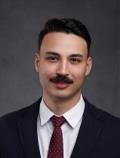 Chapter Meeting January 2024
Chapter Meeting January 2024
"Ansys MBSE Ecosystem Today and the Road Ahead to SysML v2" by
Henrique Correa
Location: Virtual (Teams)
Abstract: MBSE is not a tool, but a methodology that improves communication and collaboration between stakeholders during all phases of the lifecycle of a system, reducing risks, costs and shortening schedule. Key to this methodology is the integration of models, both descriptive (SysML) as well as analytical and simulation models used to inform design decisions. During this presentation, you’ll be provided with an overview of the Ansys MBSE framework that addresses the needs of organizations undertaking Digital Transformation, as well as practical demos and use cases from industry. You’ll also be provided with an overview of the latest technology Ansys is working on for SysML v2.
Bio: Henrique is an Account Manager focused on Ansys MBSE solutions which incorporate Model-Based Development of Embedded Software (GNC, Mission Systems, Display), Safety and Certification, Mission context (CONOPS, T&E, OA) as well as creating and maintaining Digital Twins for operations & predictive analytics. His role comprises communicating the value of a model-based approach, connecting technical resources to customer needs as well as facilitating deployment and adoption of Digital Engineering ecosystems.
Henrique has a BS in Mechanical Engineering from the University of Kentucky and a combined 5 years of technical and sales experience in support of integrating Systems Architecture (SysML) models to a variety of domains and engineering disciplines for a comprehensive MBSE methodology.
This video format is not supported
2023
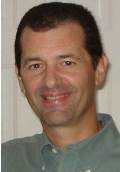 Chapter Meeting December 2023
Chapter Meeting December 2023
"A Decade of Digital Engineering Research" by
Mark Blackburn
Location: Virtual (Teams)
Abstract: This session discusses a broad range of experiences with modeling in general, including Model-Based Systems Engineering (MBSE) and Model-Based Engineering (MBE), now often referred to as Digital Engineering. The session covers the research conducted through the Systems Engineering Research Center (SERC) spanning the last decade for the US Navy (NAVAIR), US Army (Armaments Center) and US Space Force research sponsors. The presentation shares key demonstrations of experiments that have had significant outcomes for the sponsors. We discuss the research in chronological order starting from the NAVAIR Systems Engineering Transformation, and provides descriptions of the outcomes in terms of three case studies for each sponsor. This includes using these case studies to illustrate the concepts aligned with the DoD Digital Engineering Strategy such as an Authoritative Source of Truth that support Collaboration with a new operational paradigm between government and industry, leveraging new technologies such as computationally-enabled ontologies to enable cross-domain model interoperability, digital signoffs, and the latest workforce develop training results that are being used to transition the research to our sponsors.
Bio: Mark R. Blackburn, Ph.D. is a Senior Research Scientist with Stevens Institute of Technology since 2011 and principal at KnowledgeBytes. Dr. Blackburn has been the Principal Investigator (PI) on 18 System Engineering Research Center (SERC) research tasks for both US Navy NAVAIR, US Army Armaments Center and US Space Force on Digital Engineering Transformation Research Tasks. He has also been PI on a FAA NextGen and National Institute of Standards and Technology projects and has received research funding from the National Science Foundation. He develops and teaches a course on Systems Engineering for Cyber Physical Systems. He is a member of the SERC Research Council, OpenMBEE Leadership Team and INCOSE Pattern Working Group focused on the Semantic Technologies for Systems Engineering initiative.
Prior to joining Stevens, Dr. Blackburn worked in industry for more than 25 years. He has been the Principal Investigator to the National Institute of Standards and Technology on projects dating back to 2000 involving model-based tools and methods for verification and validation of security-related products and applications. Dr. Blackburn holds a Ph.D. from George Mason University, a M.S. in Mathematics (emphasis in C.S.) from Florida Atlantic University, and a B.S. in Mathematics (C.S. option) from Arizona State University.
This video format is not supported

Chapter Meeting November 2023
"Systems Engineering at the Intercontinental Ballistic Missiles (ICBMs)" by
Paul White
Location: Virtual (Teams)
Abstract: Nuclear weapons have been a topic of both fascination and concern for decades. They emerged because of the complex dynamics of international power, security, and the drive to deter conflicts between nations. They are a deterrent to prevent large-scale wars due to the potential mutual destruction they can cause.
During World War II, the United States, in cooperation with the United Kingdom and Canada, undertook the Manhattan Project in response to the threats of Nazi Germany and Japan. The Manhattan Project led to the development of the atomic bomb that ended World War II.
After World War II, the United States and the Soviet Union entered the Cold War, a period of intense rivalry. The need to deliver nuclear warheads across continents prompted the development of these long-range missiles, capable of reaching targets thousands of miles away within minutes. These development efforts resulted in the Thor, Atlas, Titan, and Minuteman missiles. Now, the Minuteman-III is the current ICBM in service. In response to increasing threats, the United States Department of Defense is modernizing its ICBM capabilities by developing the Sentinel ICBM.
In this presentation, we will discuss how systems engineering has played an integral role in our nation’s ICBM capabilities. We will show how digital engineering is a game changer in modern engineering practices, particularly with the Sentinel program.
Bio: Paul White is the ICBM Sentinel Digital Ecosystem Systems Engineer Lead for BAE Systems at Hill Air Force Base, Utah. He has worked previously at KIHOMAC, Astronautics Corporation of America, L-3 Harris, and Raytheon. He has 20 years of experience in the aerospace industry.
Paul has been an INCOSE member since 2007 serving in various top leadership roles in the North Texas (Dallas - Fort Worth) Chapter, Chicagoland Chapter, and Wasatch (Utah) Chapter. He is the past president of the Wasatch Chapter. Paul has been a leader in the annual Great Lakes Regional Conference (GLRC), serving as conference chair for the 6th and 8th conferences in 2012 and 2014, respectively. He served as the conference chair for the first annual Western States Regional Conference (WSRC) in Ogden in 2018; and he serves on the WSRC Steering Committee for 2019 and beyond. He was awarded the INCOSE Outstanding Service Award in 2019. He was awarded the INCOSE Expert Systems Engineering Professional (ESEP) certification in 2023.
He has a graduate certificate in Systems Engineering and Architecting from the Stevens Institute of Technology, a Master of Science degree in Computer Science from Texas A&M University-Commerce, and a Bachelor of Science degree in Computer Science from Texas A&M University.
This video format is not supported
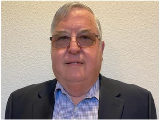
Chapter Meeting October 2023
"The TIMLM and SETDB Working Groups: Process, Methods, Tools, and Standard" by
John Nallon
Location: Virtual (Teams)
Abstract: This presentation is an overview of two very active working groups in the INCOSE Technical Operations Community. A history of their founding, what they have done, what they are doing today and what the future holds in regard to projects, products, and collaboration with other working groups and INCOSE alliance partners will be presented and discussed. Work products like the INCOSE Tools Database, data exchange and process standards, and a model management guide will also be reviewed. Audience participation with questions, comments and requirements is most welcome.
Bio: John has been a member of INCOSE since 1993. He has served several leadership roles in the North Texas Chapter, is currently the INCOSE Relationship Manager for PDES Inc. and PPI collaboration with INCOSE, the chairman of the Systems Engineering Tools Database Working Group and the INCOSE Tools Integration and Interoperability Working Group. John retired after over 40 years of product development, systems engineering and PLM consulting experience in the Aerospace & Defense, Automotive, Semi-Conductor and Government markets and lives in Denton, Texas.
This video format is not supported
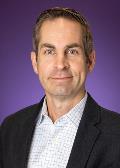 Chapter Meeting September 2023
Chapter Meeting September 2023
"Designing Products for Adaptability: Insights from Four Industrial Cases" by
Dr. Tyson R. Browning
Location: Virtual (Teams)
Abstract: Developing products that are more easily adaptable to future requirements can increase their overall value. Product adaptability is largely determined by choices about product architecture, especially modularity. Because it is possible to be too modular and/or inappropriately modular, deciding how and where to be modular in a cost-effective way is important. I will present four case studies of firms’ product architecture decisions at the component level. For each, I will show an architecture adaptability value (AAV) metric that accounts for the benefits of more architecture options versus the costs of additional interfaces. Optimizing the AAV prompted each firm to re-architect an existing product to increase its expected future profitability. Several insights emerged: (1) Although decomposing an architecture into an increasing number of modules increases product adaptability, the amount of modularity is an insufficient predictor of the adaptability value of a system, whereas AAV, which also accounts for interface costs, provides an improved measure of appropriate modularity. (2) Managers can influence the path of architectural evolution in the direction of increased value. This influence may diminish but does not disappear as products become more mature. Also, modularity and innovations co-evolved, as the new modularizations suggested by AAV optimization prompted and guided searches for further innovations. (3) When presented with the concepts of options, interface costs, and AAV, the firms’ designers and managers were initially skeptical. However, in each case the modelers were able to rearchitect an actual product not only with increased AAV by the model (theoretical improvement) but also with actual, future benefits for their firm. Post-project reports from each firm confirmed that the AAV modeling and optimization approaches were indeed helpful, equipping them to increase the adaptability, cost-efficiency, lifespan, and overall value of actual products. The evidence suggests that firms can benefit from designing products for adaptability, but that how they do so matters. This study expands our understanding of modularity and adaptability by illuminating key decisions and insights about appropriate approaches to each.
Bio: Dr. Tyson R. Browning is an internationally recognized researcher, educator, and consultant. He is a full Professor of Operations Management in the Neeley School of Business at Texas Christian University, where he conducts research on managing complex projects (integrating managerial and engineering perspectives) and teaches MBA courses on project management, operations management, risk management, and process improvement. A sought-after speaker, he has trained and advised several organizations, including BNSF Railway, General Motors, Lockheed Martin, Northrop Grumman, Seagate, Siemens, Southern California Edison, and the U.S. Navy. He has also served as an expert witness in legal proceedings.
Prior to joining TCU in 2003, he worked for Lockheed Martin, the Lean Aerospace Initiative at the Massachusetts Institute of Technology (MIT), Honeywell Space Systems, and Los Alamos National Laboratory. He earned a B.S. in Engineering Physics from Abilene Christian University before two Master’s degrees and a Ph.D. from MIT.
His research results appear in journals such as California Management Review, Decision Sciences, Information Systems Research, IEEE Transactions on Engineering Management, Journal of Mechanical Design, Journal of Operations Management, Manufacturing & Service Operations Management, MIT Sloan Management Review, Production & Operations Management, Project Management Journal, and Systems Engineering. He is also the co-author of a book on the Design Structure Matrix (DSM). He has given over 300 academic and industry presentations and workshops in 17 countries.
Having previously served as a Department or Associate Editor for three journals, he is currently co-Editor-in-Chief of the Journal of Operations Management. He is a member of several professional societies: Academy of Management, Association for Supply Chain Management, Decision Sciences Institute, Institute for Operations Research and the Management Sciences, International Council on Systems Engineering, Production and Operations Management Society, and Project Management Institute.
This video format is not supported
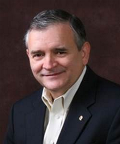
Chapter Meeting August 2023
“Decisions across the life cycles of systems are all reconciliations of inconsistencies” by
Bill Schindel
Location: Virtual (Teams)
Abstract: Systems engineering teaches us about a diverse array of decisions that occur during system development, production, distribution, operation, sustainment, and otherwise. Because of their diversity, it is challenging to become knowledgeable about the full range of these decisions, made by a diverse set of decision-makers over a long period of time. It is therefore surprising to realize that these decisions can be seen in a unified way as reconciliations of recurring inconsistencies. The INCOSE Decision Analysis Working Group and Patterns Working Group have recognized and begun capitalizing on this paradigm, which springs from the INCOSE Innovation Ecosystem Pattern. In this talk, we will examine some of these decisions in the Digital Engineering context, and how they represent instances of a shared configurable pattern. This has in-practice implications for the Digital Twin, Digital Thread, management of model credibility, and collective learning by enterprise teams. It also provides theoretical insight into the performance of large scale programs and projects confronted with complexity challenges.
Bio: Bill Schindel is president of ICTT System Sciences. His engineering career began in mil/aero systems with IBM Federal Systems, included faculty service at Rose-Hulman Institute of Technology, and founding of three systems enterprises. He chairs the INCOSE MBSE Patterns Working Group, and served on the lead team of the INCOSE Agile Systems Engineering Life Cycle Discovery Project. He is an active member of the AIAA subcommittees on reference models for Digital Threads and Digital Twins, and the ASME VV50 working group on computational model credibility in advanced manufacturing. Schindel is an INCOSE Fellow and CSEP, and is a director and past president of the INCOSE Crossroads of America Chapter.
This video format is not supported
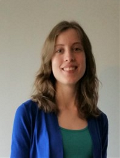 Chapter Meeting July 2023
Chapter Meeting July 2023
"Scope Complete Path Tracing through State Machines with Monterey Phoenix" by
Pamela Dyer
Location: Virtual (Teams)
Abstract: Monterey Phoenix (MP) is an NPS-developed language, approach, and tool for rapidly and formally modeling scope-complete sets of mission, system, and process behaviors. In MP, scope represents the size of the model, and specifically means the user-defined maximum on the number of iterations. Ultimately, MP is used to ask and answer questions about behavior and helps modelers to discover emergent system behaviors – before they happen in the actual system. Since state machines are of vital importance in MBSE, an executable state diagram of a simple Stopwatch from a Cameo Simulation Toolkit tutorial will be highlighted. The analogous Monterey Phoenix state diagram of the Stopwatch will also be displayed, with a discussion focused on the unmatched advantage that MP brings – a way to verify these diagrams by extracting every path through exhaustively and ensuring there is full coverage. The browser-based Monterey Phoenix tool, MP-Firebird, will be introduced. A new tool called Open Seabird will also be discussed, in which activity diagrams can be drawn right in the browser for subsequent generation of either SysML v2 code or MP code.
Bio: Pamela Dyer is currently an Oak Ridge Institute for Science and Education (ORISE) Fellow working in the Naval Postgraduate School’s Department of Systems Engineering. Her present research involves the use of Monterey Phoenix (MP) for behavior modeling of numerous types of missions, systems, and processes, as well as the examination of ways to get MP capability to SysML users and the significance of a crosswalk between MP and SysML. Pamela also coaches new learners of the MP language and tool by assisting with formal behavior logic and constraints, debugging errors in the executable code, and emergent behavior analysis of generated traces. She holds a B.S.E. degree from the University of Connecticut, with a major in Materials Science and Engineering and a minor in Mathematics. In addition, she earned an M.S. degree in Materials Science and Engineering from the University of Connecticut. While pursuing her Master’s degree, she participated in a summer Naval Research Enterprise Internship Program (NREIP) at the Naval Undersea Warfare Center in Newport, Rhode Island.
This video format is not supported
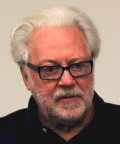
Chapter Meeting June 2023
"Agile Systems Engineering – A Primer on Eight Core Aspects" by
Rick Dove
Location: Virtual (Teams)
Abstract: Agile engineering, of any kind, employs strategies for designing, building, sustaining, and evolving purpose-fulfilling creations when knowledge is uncertain and operational environments are dynamic. Strategies address what needs to be accomplished and why, without constraints or directions on how. How those strategies manifest as operational methods depends upon the engineering context. Though single-domain software engineering is different than multi-domain systems engineering, both share the same goals and strategies. A primer on eight core strategic aspects, discussed as behaviors in fulfillment of needs, will be shown to enable and amplify systems engineering agility.
Bio: Rick Dove is an independent researcher, systems engineer, and project manager generally focused in the system security and system agility areas. He chairs the INCOSE working groups for System Security Engineering, and for Agile Systems and Systems Engineering. He is an INCOSE Fellow, and author of Response Ability – the Language, Structure, and Culture of the Agile Enterprise
This video format is not supported
 Chapter Meeting May 2023
Chapter Meeting May 2023
"Account Manager for Ansys New & Emerging Technology: MBSE" by
Henrique Correa
Location: Virtual (Teams)
Abstract: MBSE is not a tool, but a methodology that improves communication and collaboration between stakeholders during all phases of the lifecycle of a system, reducing risks, costs and shortening schedule. Key to this methodology is the integration of models, both descriptive (SysML) as well as analytical and simulation models used to inform design decisions. During this presentation, you’ll be provided with an overview of the Ansys MBSE framework that addresses the needs of organizations undertaking Digital Transformation, as well as practical demos and use cases from industry.
Bio: Henrique is an Account Manager focused on Ansys MBSE solutions which include ModelCenter (model-to-model integration, process automation), SCADE (model-based embedded software development) and medini (model-based safety & reliability analysis). His role comprises communicating the value of a model-based approach, connecting technical resources to customer needs as well as facilitating deployment and adoption of Digital Engineering ecosystems.
Henrique has a BS in Mechanical Engineering from the University of Kentucky and a combined 5 years of technical and sales experience in support of integrating Systems Architecture (SysML) models to simulation and analytical workflows for a comprehensive MBSE methodology.
This video format is not supported
Chapter Meeting April 2023
2 part presentation:
Location: Virtual (Teams)
Part 1:
"Talk to Me: Large Language Models are Revolutionizing AI" by
Barclay Brown, PhD
Abstract: “Shockingly good” advances in natural language generation (
2020 MIT Article) by systems like GPT-3 (Generative Pre-trained Transformer, 3rd generation) and Google LaMDA (Language Model for Dialogue Applications) are enabling AI systems to do previously impossible human-like language tasks, including writing journal articles (
Scientific American article). GPT-3 is capable of being interviewed (
video). Numerous business applications have been developed and imagined (
article) including the ability to add domain-specific text to GPT-3’s training. The controversy of Google Lambda’s claimed sentience (
interview with Google engineer Lemoine)
 Bio
Bio: Barclay R. Brown is Associate Director for AI Research at Collins Aerospace, a division of Raytheon Technologies. Before joining Collins, he was an Engineering Fellow in Raytheon Missiles and Defense, focusing on MBSE, and prior to that he was the Global Solution Executive for the Aerospace and Defense Industry at IBM. Dr. Brown holds a bachelor’s degree in Electrical Engineering, master’s degrees in Psychology and Business and a PhD in Industrial and Systems Engineering. He is author of Engineering Intelligent Systems, published by Wiley, and is a certified Expert Systems Engineering Professional (ESEP), certified Systems Engineering Quality Manager, and CIO of INCOSE.
Part 2:
"An Overview of Systems Engineering Challenges for AI-Enabled Systems" by Dr. Ali Raz
Abstract: Future operational concepts of systems and system-of-systems in both civil and defense domains increasingly demand integration and interoperability of multiple intelligent systems driven by artificial intelligence (AI) technologies such as machine learning and deep learning. AI technologies will become an integral element of the complex systems that needs to be coupled with systems engineering practices starting from system concept definition and extending throughout the system life cycle. Although systems engineering has been at the forefront of system development in the past, the unique challenges of machine learning and deep learning require evolution of systems engineering methodologies for future AI-enabled systems. The talk will first introduce AI from a Systems Engineering perspective and then discuss the need for systems engineering for acquisition and operationalization of AI.
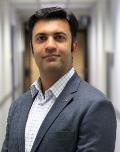 Bio
Bio: Dr. Ali Raz is an Assistant Professor at George Mason University Systems Engineering and Operations Research department and an Assistant Director of Intelligent Systems and Integration at the C4I and Cyber Center. Dr. Raz research and teaching interests are in understanding collaborative autonomy and developing systems engineering methodologies for integrating autonomous systems. He holds a BSc. and MSc. in Electrical Engineering from Iowa State University, and a Ph.D. in Aeronautics and Astronautics from Purdue University. He is a co-chair of International Council of Systems Engineering (INCOSE) AI Working Group and a Certified Systems Engineering Professional (CSEP). He is also a senior member of the American Institute for Aeronautics and Astronautics (AIAA) and Institute of Electrical and Electronics Engineers (IEEE).
This video format is not supported
 Chapter Meeting March 2023
Chapter Meeting March 2023
"ISO/IEC 29110 - Steps Towards Mature Systems Engineering Practices For Small Businesses and Enterprise VSEs" by
Craig Leger
Location: Virtual (Teams)
Abstract: Small businesses are the dominant form of business, representing between 95% and 99% of all businesses worldwide.
Many small businesses understand the importance of ISO certification, but often encounter problems in adopting the international standards necessary for certification. Small businesses (and even some teams within larger organizations) are asking for assistance in adopting international standards like ISO 15288.
The ISO/IEC 29110 Series aims to provide that assistance by providing guidance on the incremental adoption and implementation of ISO/IEC standards, including ISO 15288, ISO 15289, ISO 12207, and ISO 9001.
The INCOSE Small Business Systems Engineering Working Group (SBSE WG) is working with ISO/IEC JTC 1/SC 7 subcommittee on Software and Systems Engineering to publish the next version of ISO/IEC 29110.
The SBSE WG is also developing INCOSE publications that are to be used with ISO/IEC 29110, including guidelines that are tailored for organizations at different levels of SE maturity, and deployment packages. Deployment packages include a description of roles, processes, tasks, and artefacts, with examples, templates, and checklists designed to help a team implement a particular set of SE practices, like Project Management or Configuration Management.
Bio: Craig Leger is Co-Chair of the Small Business Systems Engineering Working Group (SBSE WG), and an active contributor in several INCOSE Working Groups. He has a special interest in business process management and the paths that organizations take to become more mature in systems engineering practice. He is the Dallas Chapter President of the International Institute of Business Analysis, and also a member of the Association of Business Process Management Professionals International.
Craig has over 25 years of experience in telecommunications, specializing in requirements analysis, interface management, and business process improvement. Initially working in the development of wireless networks (Bell-Northern Research, Nortel Networks, and Ericsson), Craig transitioned into systems engineering at Nokia as requirements engineer for the Honolulu Metro Rail project.
Craig is an alumnus of the National Security Innovation Network (NSIN) Foundry program that matches inventors, entrepreneurs, research labs, and subject matter experts to evaluate the commercialization potential of cutting-edge Department of Defense (DoD) technologies.
Craig has a Ph.D. in Computer Science from the University of Louisiana, and taught Computer Science at Louisiana Tech University and the University of Louisiana.
This video format is not supported
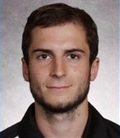 Chapter Meeting February 2023
Chapter Meeting February 2023
"Requirements Modeling and Automated Testcase Generation" by
Dalton L'Heureux
Location: Virtual (Teams)
Abstract: The Requirements Table block allows you to find errors in your system earlier by analyzing requirements for 'completeness' and 'consistency' before you even begin your design!... This is the story you are told every time someone talks about the Requirements Table block, but there's a more valuable picture to be painted. By making use of Simulink Design Verifier, Simulink Test and Simulink Coverage, we can generate testcases from our modeled requirements, and verify our design is meeting those requirements without needing to manually write thousands of testcases. And best of all, since we've independently modeled our requirements and our design, our generated testcases have the potential to yield complete requirement, model, and code coverage valid under safety critical verification standards.
Bio: Dalton obtained a BSE in Aerospace Engineering and a MSE in Unmanned and Autonomous Systems Engineering from Embry-Riddle Aeronautical University. Dalton worked as a Systems Engineer at Collins Aerospace, developing flight software for the Boeing 777X and Bombardier C-Series Aircraft. At Collins, his main responsibilities were in specification modeling and test case development and generation. In April 2020, Dalton joined the MathWorks as an Application Engineer with a focus in helping aerospace customers best utilize the MathWorks' Systems Engineering, Verification & Validation, and Code Generation tools for DO-178C certification and other high integrity/safety-critical applications.
This video format is not supported
Chapter Meeting January 2023
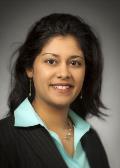
"Takeaways from PMI Global Summit December 2022 – Program Management and Systems Engineering" by
Dr. Tina P. Srivastava
Location: Virtual (Teams)
Abstract: Dr. Tina P. Srivastava and Mark Kaufman presented at PMI Global Summit in December 2022 to an audience of over 90 attendees. This talk will share key takeaways from the event, as we as highlight the key points covered during the session.
When there is tension and confusion over the roles of project managers vs. systems engineers, programs suffer from deadline overruns and failures. The target audience includes professionals from both systems engineering and project management spheres, including those new to either discipline. Program managers must understand key systems engineering fundamentals, and vice versa, in order to critically evaluate and, when necessary, credibly challenge management on potentially unrealistic expectations related to project cost, schedule, scope and risk.
At the conclusion of this session, attendees will be able to:
1. Identify opportunities to achieve improved program outcomes and reduced overruns in complex environments.
2. Critically evaluate and, when necessary, credibly challenge management on potentially unrealistic expectations related to project cost, schedule, scope and risk.
Bio: Dr. Tina P. Srivastava served on the board of directors of the International Council on Systems Engineering (INCOSE) and received the Inaugural David Wright Leadership Award for technical and interpersonal competencies in the practice of system engineering as a means for solving the great challenges of our planet. She is a lecturer at MIT in the areas of aerodynamics, aviation, complex systems, and technology road mapping and selection. She is also the author of the book Innovating in a Secret World. Dr. Srivastava cochairs the Program Management (PM) — Systems Engineering (SE) Integration Working Group, which received the Working Group Award at INCOSE in 2022. Dr. Srivastava is one of the authors and editors of the book Integrating Program Management and Systems Engineering, a joint product of PMI, INCOSE, and MIT. As an innovator, entrepreneur and technology expert, Dr. Srivastava’s experience spans roles as chief engineer of electronic warfare programs at Raytheon to cofounder of a venture-backed security startup. She is an FAA-certified pilot and instructor of MIT’s Pilot Ground School course. Dr. Srivastava earned her Ph.D. in strategy, innovation, and engineering, a master’s in system design and management, and a bachelors in aeronautics and astronautics, all from MIT.
2022
Chapter Meeting June 14, 2022
"Feature Space: Where System Value, Purpose, Risk, and Configurability All Come Together" by Dr. William "Bill" Schindel
Location: Virtual (see chapter newsletter for connection information)
Abstract: Model-based digital engineering offers the possibility of clarity of models that powered the scientific revolution. Among the surprising results of this is realization that, for sufficiently structured models, some seemingly separate aspects of engineering can be collapsed into a simpler integrated representation. Engineers are accustomed to thinking of mission engineering, stakeholder needs analysis, requirements engineering, optimization of design, risk analysis, and engineering of product line variants as a series of related but different subjects that collectively add up to a complex problem. In this talk, we will summarize some implications of the question “What is the smallest model of a system?” for purposes of engineering and science across the life cycle. We will take a look at Feature Space, how it reduces degrees of freedom to give a clearer integrated view of system value, purpose, risk, and configurability, along with SysML realization of this approach.
Bio: Dr. William "Bill" Schindel
Bill Schindel is president of ICTT System Sciences. His engineering career began in mil/aero systems with IBM Federal Systems, included faculty service at Rose-Hulman Institute of Technology, and founding of three systems enterprises.
He chairs the INCOSE MBSE Patterns Working Group, and served on the lead team of the INCOSE Agile Systems Engineering Life Cycle Discovery Project. He is an active member of the ASME VV50 working group on model credibility in advance manufacturing, and the AIAA digital thread and digital twin case study teams.
Schindel is an INCOSE Fellow and CSEP, and is a director and past president of the INCOSE Crossroads of America Chapter.